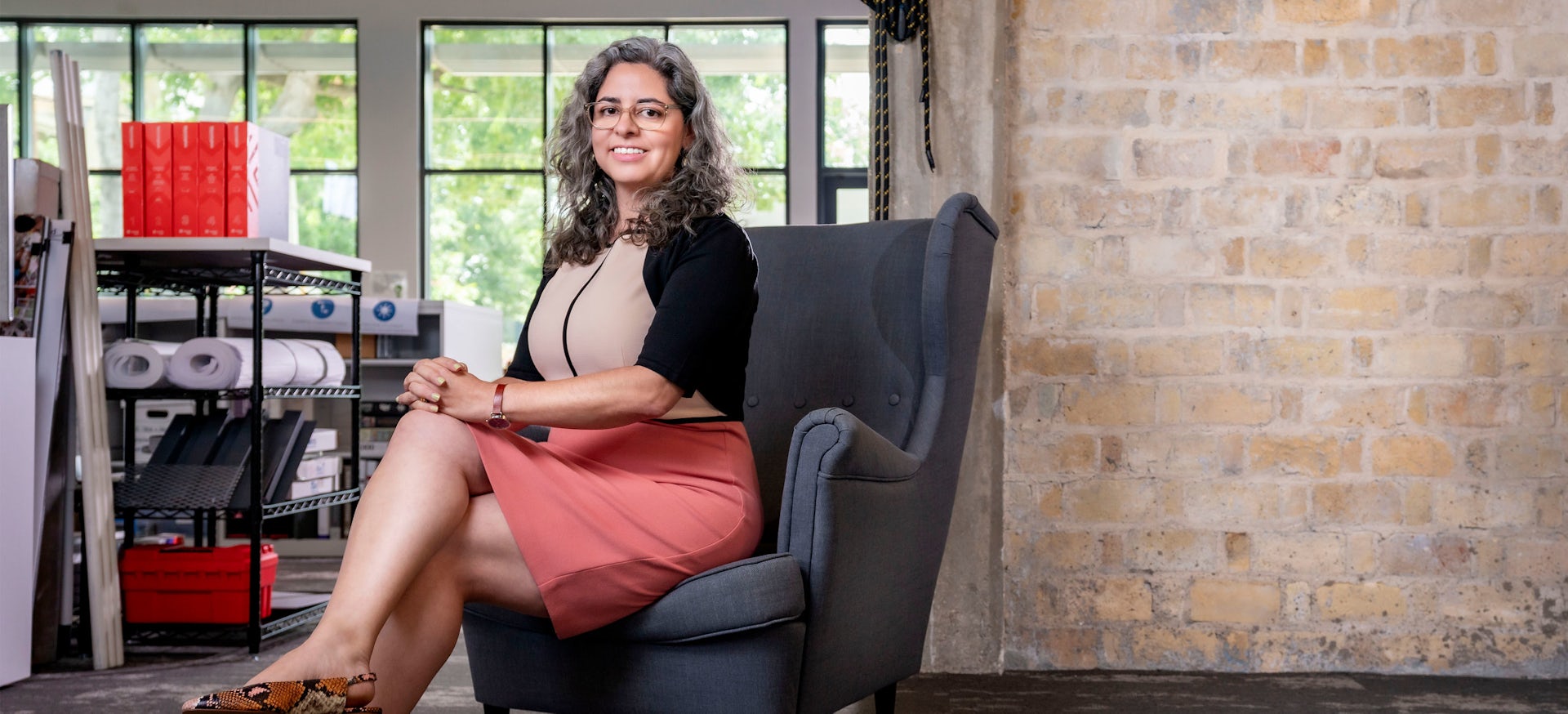New LPA Director of Lab Planning, Isabel Mandujano, on the growing demand for life science facilities, the importance of modular design and making laboratories more sustainable.
Life sciences veteran Isabel Mandujano brings years of experience working on innovative research and development facilities to her new role as LPA’s director of lab planning.
With LPA, Isabel is focused on supporting the integrated firm’s work with corporate, pharmaceutical and biotechnology clients, helping to develop eco-systems to support creativity and collaboration. She also is an active voice in the life sciences community, sharing her experiences and knowledge. “An important aspect of my role is inspiring and mentoring the next generation of architects in the laboratory planning space,” she says.
In an interview, she discusses the latest advances in laboratory planning and the pandemic’s impact on the life science industry.
What made you interested in joining LPA?
I joined LPA because of the firm’s unwavering commitment to sustainability, coupled with the design excellence that is shown on every project. The fact that it’s an integrated firm was important to me as well. When you’re working with complex technical and environmental requirements that make a lab functional and safe it’s a significant benefit to be working with a cohesive team.
What trends and opportunities are you seeing in laboratory planning?
Traditionally, people think of laboratories as being a highly technical, sterile space in a dark basement, but today’s companies are looking to give their employees a better working experience. Creating a comfortable environment is an important part of promoting the creativity and collaboration needed for innovation. Because of this, we look to incorporate ample daylight, a blend of private focus areas and collaboration space, and amenities such as all-hands event space, access to and views of outdoor areas, breakroom areas with a café feel and all of the other benefits of a modern office. With the long hours that are often necessary in the life science space, promoting health and wellness through design is another important trend.
The lab planning industry is also moving toward more automation and robotics. A modular, adaptable design – where users can easily adjust the space for each new piece of equipment and technology without having to do a remodel – is critical to ensuring laboratories can accommodate the latest technological innovations and best practices. Computational research and AI will continue to influence the shift from traditional wet labs to comingle with space that supports data analytics.
What are the key challenges facing the industry?
The biggest challenge is getting life science facilities built fast enough to meet the high demand. One common solution is the adaptive reuse of existing office space, which has become available with continued work from home and hybrid work schedules for traditional office workers. In addition to being a more environmentally friendly solution, it shortens the project timeline significantly and allows the end user to move in and start using the space much more quickly.
The conversion of space that was not originally designed for lab space comes with complex technical challenges to upgrade the required infrastructure and adapt less than ideal physical space, which is a driving force for architects, lab planners and engineers to work collaboratively to come up with creative solutions to accommodate.
What effect has the pandemic had on the life science industry?
The pandemic has brought to the forefront the importance of research and innovation. Vaccine and therapeutic development to respond to the COVID crisis, as well as increased awareness of the importance of health, have driven increased demand for laboratory space, with new interest in developing life science space in emerging markets outside of the traditional life science clusters.
Supply chain issues in the construction industry mean that building owners increasingly have to make early decisions without knowing exactly who the lab users will be, so adaptability and flexibility in design and design-build partnerships are more relevant than ever.
How do you make laboratories more sustainable?
Laboratories use 10 times more energy than other building types, so it’s incredibly important to implement creative solutions to create more sustainable and efficient laboratory spaces.
The building envelope is an important consideration, but there are also many strategies we can use on the lab operations side, working with lab managers and users to evaluate alternative options. For example, fume hoods use a sizable amount of energy, and in the U.S. the standard is 100 feet per minute face velocity. Energy efficient fume hoods, on the other hand, can run as low as 60 feet per minute. It’s important to work with the engineering team and local code officials to understand the type of chemicals being used in the space to evaluate if lower flow fume hoods can be a viable solution.
Using point of use rather than central systems for utilities such as laboratory vacuums and pure water, afford more flexibility as needs change and allow users to provide these services where they are really needed, rather than hard piping through the whole building which lowers efficiency and increases maintenance.
Labs often have ultra-low freezers set to negative 80 degrees Fahrenheit. However, some types of samples can be conserved equally well at negative 70 degrees, which can help conserve energy. Green chemistry programs, which guide lab users in using chemicals that are less harmful to people and the environment, and recycling programs for laboratory supplies are other important considerations that can be implemented in existing laboratories.














